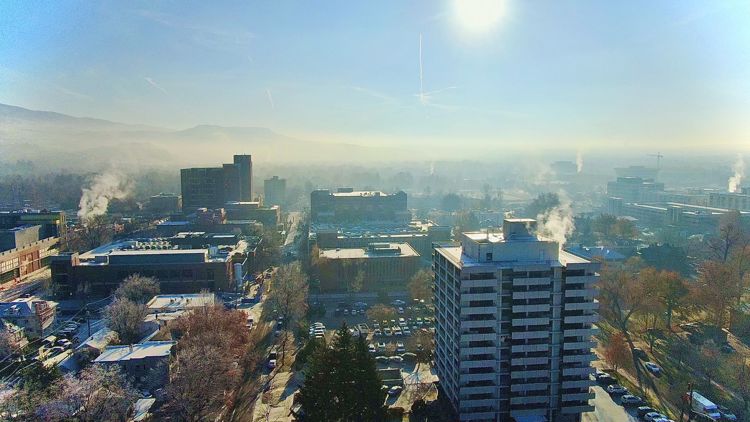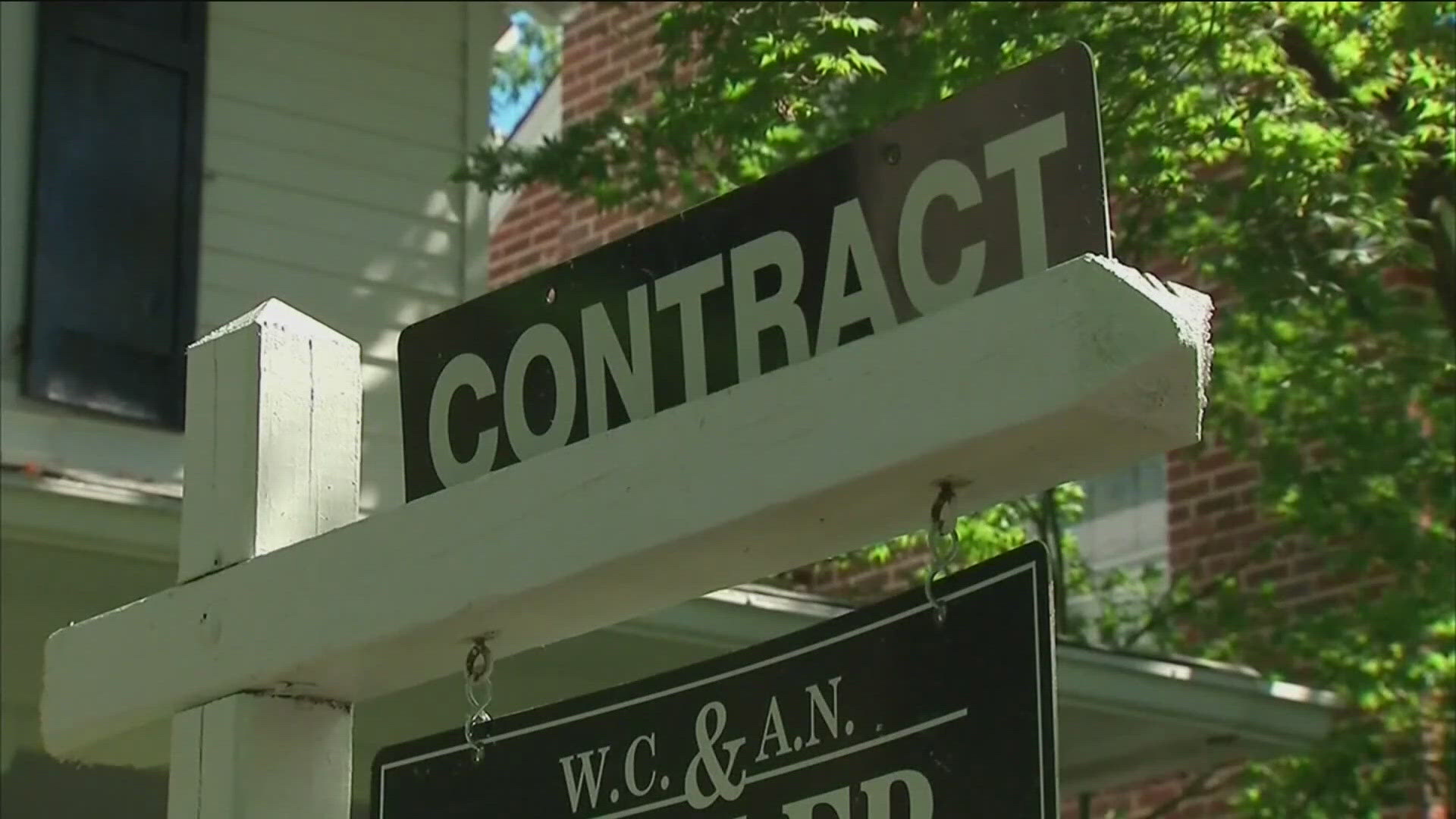BOISE, Idaho — Vicki Carley began to see a shift. Instead of busy weekdays and full conference rooms, the hotels she works with began accommodating different types of visitors.
Gone were the business travelers staying in Boise during the week. In came the leisure seekers looking for a getaway.
“The whole market flipped,” said Carley, regional director of sales and marketing for The Grove Hotel, Courtyard by Marriot Boise Downtown and Hotel 43.
After enduring a year of fewer hotel guests and events, Carley is optimistic about what’s to come. As COVID-19 vaccinations increase and case numbers decline, those in the industry believe tourism is likely to be part of the recovery from the pandemic.
When and how is to be determined.
“It’s kind of a wait and see where we’re at,” Carley said of business conventions returning.
The combination of positivity and uncertainty is shared widely in tourism circles. Idaho’s economic recovery has been among the best in the nation. Tourism, though, is inextricably tied to other places where restrictions may be tighter and people may not be as comfortable traveling.
While the pandemic has taught people that planning ahead may be difficult because of constantly changing rules, Carley has fielded “lots” of calls from people wanting to host events again. The upcoming spring and summer will allow visitors to take advantage of the outdoors. And the rest of the year likely means an industrywide transition.
“We’re all very optimistic that by 2022 we can resume operations as normal,” Carley said. “It’s hard to gauge. I didn’t know it was going to last this long.”
Pre-pandemic Boise was featured as a must-see travel destination by a variety of publications, including The New York Times, which touted the city’s amenities in its “36 Hours” travel series in 2018.
Boise’s hotel occupancy rate declined from 70.4% in 2019 to 53.1% in 2020, according to data from Smith Travel Research.
The Boise Airport experienced 48% of passenger traffic in 2020 compared to 2019, the airport’s business development manager Sean Briggs said.
After travelers spent $5.7 billion in Idaho in 2019, they spent 29% less in 2020, according to U.S. Travel Association. That’s a loss of about $1.75 billion.
But once people are willing to travel again, Boise Convention and Visitors Bureau Executive Director Carrie Westergard believes “the floodgates are going to open.”
“What’s really eye-opening,” Westergard said, “is nothing replaces in-person interaction.”
At the end of the college basketball season, ExtraMile Arena hosted hundreds of fans at Boise State University men’s and women’s basketball games. Attendance for the five games averaged 639. It was far less than pre-pandemic numbers, but the events illuminated what’s possible for events that used to attract out-of-towners.
The arena used pod seating, meaning fans were assigned to certain seats in small groups and separated from other small groups. Arena staff also spent time in the past year working on sanitation practices and recently received accreditation from the Global Biorisk Advisory Council, widely considered the gold standard for cleanliness in facilities like arenas and hotels.
“These restrictions right now are what’s going to allow us to move forward for other events,” ExtraMile Arena Associate Director of Marketing McQ Olsen said. “It’s important to follow these restrictions of face masks or pod seating to stay in your pods and everything associated with that.”
The Ford Idaho Center in Nampa similarly hosted high school state tournaments in recent weeks, and General Manager Andrew Luther viewed the events positively. The venue typically averages around 130 events in a calendar year, and Luther expects to hit that number in 2021. The change is the events might be a bit different or with less capacity.
Luther pointed to professional sporting events in some of the country’s biggest cities that are starting to allow fans. To him, that’s a sign of improvement. And the Ford Idaho Center still has upcoming events on its calendar such as Professional Bull Riding on April 23 and 24 as well as the Snake River Stampede from July 20-24.
In the past, the five-day rodeo brought in 60,000 people and had an economic impact of $5 million to $10 million, according to Stampede officials. This year, how many people are allowed to attend is still being decided.
“That’s the million-dollar question,” Luther said.
Boise might be better positioned to rebound than larger cities because its mid-size status means it’s viewed as safer to travel to, Downtown Boise Association Executive Director Jennifer Hensley said.
Based on DBA’s observations, 16 downtown businesses had pandemic-related closures. In the same period, though, 43 new businesses opened.
While sad about the lost businesses, Hensley views those numbers as a reflection of the city’s resiliency. But there are still restrictions in place limiting restaurants to 50% capacity, leaving her with a mix of optimism and cautiousness.
“People are excited to be back out again. They’re excited to patron their favorite places down here again,” Hensley said. “But we’re also very glad that they’re coming at it from an aspect of still trying to maintain safety.”
Earlier this month, the Big Sky Conference announced it will continue to hold its men’s and women’s basketball conference tournaments at Idaho Central Arena in downtown Boise through 2026. Carley said that’s a “huge win” for The Grove Hotel, which is attached to the 5,000-seat arena, formerly called CenturyLink Arena.
After only a few hundred fans were allowed at games this month, Carley hopes the stands are full in 2022. Projections throughout the industry indicate full recovery taking years, but potential for improvement in the short term.
“I see light at the end of the tunnel,” Carley said.
In 2020, Boise State University hosted just three football games. Fans were allowed to attend two of them. Only 1,100 fans showed up each time to Albertsons Stadium, which has a capacity of more than 36,000.
Typical game-day weekends used to bring in droves of people from throughout the state. The Boise Convention and Visitors Bureau roughly projected $2.2 million is injected to the local economy every home game.
Not during the pandemic.
On Wednesday, BSU announced more than 5,000 fans will be allowed to attend the team’s spring football game on April 10. It’s a sign pointing to both the possibility of having more fans this fall than last and increasing tourism as the year progresses.
In recent months, the Boise Airport has announced plans for new flights to New York City; Atlanta; Chicago; Austin, Texas; and Nashville, Tennessee.
Briggs, the airport’s business development manager, said Boise’s connectivity is stronger than ever before because of the large hubs planes are headed to. It’s another tangible reason people in the industry believe in the rebound.
“We’re seeing airlines invest in the Treasure Valley and the Boise Airport,” Briggs said. “And typically when they do that, it’s because they’re seeing passenger traffic start to come back.”
While the declines in travel weren’t as large here as other places, hesitancy remains. The Boise area will still rely on people coming in from elsewhere. And those places may be experiencing tighter restrictions and reluctance to travel.
A national concert tour is like a big tapestry, the Ford Idaho Center’s Luther said. Cities like Seattle, Portland, Oregon, and Spokane, Washington, may all have different attendance capacities that organizers have to comply with. It makes it challenging for tour organizers and may not be financially viable.
“I don’t think it’s going to be like a light switch,” Luther said, “and one day it’s flipped back on.”
Even as the near future remains uncertain, tourism industry leaders have reasons to believe.
Paul Schwedelson covers growth, Nampa and Caldwell. Follow him on Twitter @pschweds.
More from our partners at The Idaho Press: A Succulent Day: Boise woman runs shop inspired by mother's garden
Watch more 'Growing Idaho':
See the latest growth and development news in our YouTube playlist:



